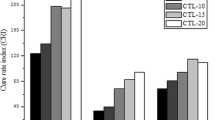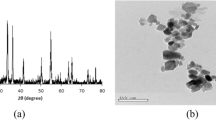Abstract
A new composite has been developed from natural rubber and chrome-tanned leather waste for use in footwear and textile industries. The contribution of this material to environmental quality and sustained development should be highligh because chrome tanned leather wastes, a major environmental problem, can be recycled. However, the safety of this new material for human use is questionable, as it is already well reported in the literature that chromium, particularly in its hexavalent oxidation state, can be genotoxic and carcinogenic to living beings. Thus, the aim of this study was to evaluate in vitro biocompatibility of this composite material for possible use in the footwear and textile industries, through cytotoxicity, cell adhesion, and genotoxicity tests. Inductively coupled plasma optical emission spectrometry (ICP-OES) was used to measure both concentrations of total and hexavalent chromium. Based on the findings, it was concluded that the composite exhibits low levels of cytotoxicity and genotoxicity, and possesses favorable properties for initial cell adhesion. Furthermore, it was verified that the composites released low concentrations of chromium and that the predominant species released would be trivalent chromium. The results of the present study open the possibility of the incorporation of solid residues of tanned leather into chromium without necessarily the chromium contained in these residues influences the toxicity and genotoxicity of this new material.







Similar content being viewed by others
References
Garcia NG, Reis EAP, Budemberg ER, Agostini DL da S, Salmazo LO, Cabrera FC, Job AE (2015) J Appl Polym 132:41636
Dixit S, Yadav A, Mukul PDD (2015) J Clean Prod 87:39
Jiang H, Liu J, Han W (2016) Waste Manage Res 34:399
U.S. EPA (2015) Advancing sustainable materials management: facts and figures. 2013. U.S. EPA, Washington, DC
Ferreira MJ, Almeida MF, Freitas F (2011) Polym Eng Sci 51:1418
Senthil R, Hemalatha T, Kumar BS, Uma TS, Das BN, Sastry TP (2015) Clean Technol Environ Policy 17:187
Joseph S, Ambone TS, Salvekar AV, Jaisankar SN, Saravanan P, Deenadayalan E (2015) Polym Compos. doi:10.1002/pc.23891
Katsikeas CS, Leonidou CN, Zeriti A (2016) J Acad Mark Sci. doi:10.1007/s11747-015-0470-5
Mishra S, Bharagava RN (2016) J Environ Sci Health C Environ Carcinog Ecotoxicol 34:1
Hedberg YS, Lidén C (2016) Contact Derm 75:82
Klemola K, Pearson J, Liesivuori J, Lindström-Seppä P (2009) J TEXT I 100
Oeko-Tex (2016)https://www.oeko-tex.com100 [06 june 2016]
ISO 10993-5 (2009) Biological evaluation of medical devices—Part 5: tests for in vitro cytotoxicity. International Organization for Standardization, Geneva
Boutrand J (2012) Biocompatibility and performance of medical devices, 1st edn. Woodhead Publishing, Oxford
Anselme K (2000) Biomaterials 21:667
Santos RJ, Agostini DLS, Cabrera FC, Budemberg ER, Job AE (2015) Polym Compos 36:2275
ASTM F619 (2014) Standard practice for extraction of medical plastics. ASTM International, West Conshohocken
Mosmann T (1983) J Immunol Methods 65:55
ASTM F813-07 (2012) Standard practice for direct contact cell culture evaluation of materials for medical devices. ASTM International, West Conshohocken
Singh NP, McCoy MT, Tice RR, Schneider EL (1988) Exp Cell Res 175:184
Kobayashi H, Suguyama C, Morikawa Y, Hayashi M, Sofuni T (1995) MMS Commun 3:103
Cabeza LF, Taylor MM, Di Maio GL, Brown EM, Marmer WN, Carrió R, Celma PJ, Cot J (1998) Waste Manage 18:211
Rezić I, Steffan I (2007) Microchem J 85:46
Rizzi M, Cravello B, Ren F (2014) Cell Prolif 47:578
Hedberg YS, Lidén C, Odnevall Wallinder I (2015) Contact Dermat 72(4):206–215
DIN EN ISO 17075 (2007) Leather - Chemical tests—determination of chromium (VI) content. Technical Committee CEN/TC 289
Mathiason F, Lidén C, Hedberg YS (2015) Contact Dermat 72(5):275–285
Bagchi D, Stohs SJ, Downs BW, Bagchi M, Preuss HG (2002) Toxicology 180:5–22
Shrivastava HY, Ravikumar T, Shanmugasundaram N, M B, Balachandran UN (2005) Free Radic Biol Med 38:58–69
Hininger I, Benaraba R, Osman M, Faure H, Roussel AM, Anderson RA (2007) Free Radic Biol Med 42:1759–1765
Novotnik B, Scancar J, Mila R, Filipi M, Zegura B (2016) Chemosphere 154:124–131
Zangi S, Hejazi I, Seyfi J, Hejazi E, Khonakdar HA, Davachi SM (2016) Mater Sci Eng C 63:609
Bacakova L, Filova E, Parizek M, Ruml T, Svorcik V (2011) Biotechnol Adv 29:739
Assender H, Bliznyuk V, Porfyrakis K (2002) Science 297:973
Chang H-I, Wang Y (2011) Cell responses to surface and architecture of tissue engineering scaffolds. In: Eberli D (ed) Regenerative medicine and tissue engineering—Cells and biomaterials. InTech. https://www.intechopen.com/books/regenerative-medicine-and-tissue-engineering-cells-and-biomaterials
Vagaská B, Bacáková L, Filová E, Balík K (2010) Physiol Res 59:309
Deng Y, Liu X, Xu A, Wang L, Luo Z, Zheng Y, Deng F, Wei J, Tang Z, Wei S (2015) Int J Nanomed 10:1425
Rea SM, Brooks RA, Schneider A, Best SM, Bonfield W (2004) J Biomed Mater Res B Appl Biomater 70:250
Lee SJ, Choi JS, Park KS, Khang G, Lee YM, Lee HB (2004) Biomaterials 25:4699
Dhawan A, Bajpayee M (2009) Cell Biol Toxicol 25:5
Anderson D, Dhawan A, Laubenthal J (2013) Methods Mol Biol 1044:347
Collins AR (2015) Mutagenesis 30:1
Urcan E, Scherthan H, Styllou M, Haertel U, Hickel R, Reichl FX (2010) Biomaterials 31:2010
Shehata M, Durner J, Eldenez A, Van Landuyt K, Styllou P, Rothmund L, Hickel R, Scherthan H, Geurtsen W, Kaina B, Carell T, Reichl FX (2013) Dent Mater 29:971
Styllou M, Reichl FX, Styllou P, Urcan E, Rothmund L, Hickel R, Högg C, Scherthan H (2015) Dent Mater 31: 1335
Cavalcante DGSM, Gomes AS, Reis EAP, Danna CS, Kerche - Silva LE, Yoshihara E, Job AE (2016) Toxicol Ind Health. doi:10.1177/0748233716674398
Wise SS, Holmes AL, Liou L, Adam RM, Wise SJP (2016) Toxicol Appl Pharmacol 296:54
Figgitt M, Newson R, Leslie IJ, Fisher J, Ingham E, Case CP (2010) Mutat Res 688:53–61
Acknowledgements
The authors acknowledge Fundação de Amparo à Pesquisa do Estado de São Paulo (FAPESP), for the financial support, and Agência Paulista de Tecnologia dos Agronegócios (APTA) for the use of its facilities.
Author information
Authors and Affiliations
Corresponding author
Ethics declarations
Conflict of interest
The authors declare that they have no conflict of interest.
Glossary
- MBTS
-
2,2′-dithiobis (benzothiazole)
- TMTD
-
Tetramethyl thiuram disulfide
- ICP-OES
-
Inductively coupled plasma optical emission spectrometry
- MTT
-
3-(4, 5-dimethylthiazol-2-yl)-2, 5-diphenyltetrazolium Bromide
- EDTA
-
Ethylenediamine tetraacetic acid
- DAPI
-
4′,6-diamidino-2-phenylindole
Rights and permissions
About this article
Cite this article
Cavalcante, D.G.S.M., Gomes, A.S., Santos, R.J. et al. Composites Produced from Natural Rubber and Chrome-Tanned Leather Wastes: Evaluation of their In Vitro Toxicological Effects for Application in Footwear and Textile Industries. J Polym Environ 26, 980–988 (2018). https://doi.org/10.1007/s10924-017-1002-9
Published:
Issue Date:
DOI: https://doi.org/10.1007/s10924-017-1002-9




